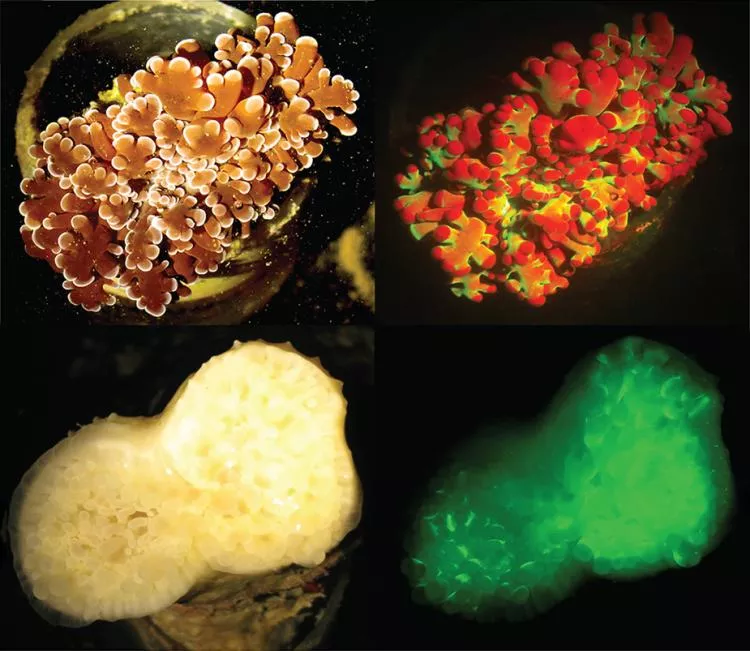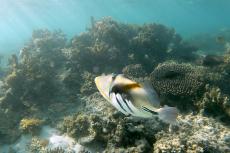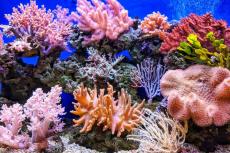Glowing corals found in the Red Sea
Glowing corals that display a surprising array of colours have been discovered in the deep water reefs of the Red Sea.
Researchers have discovered scleractinian corals that are brightly fluorescent at depths of 50–60 m. Many of them glow brightly with fluorescent colours, ranging from green over yellow to red. The encounter of such a rainbow of coral colours in deep waters was unexpected since their shallow-water counterparts in the same reef contain only green fluorescent pigments.
"Corals from these so-called mesophotic reefs are less well studied since they are beyond the depth limits of standard Scuba diving techniques. Advances in technical diving have enabled us to explore coral communities from these deeper waters," says Gal Eyal, PhD candidate at the Interuniversity Institute for Marine Sciences (IUI), Israel.
"Since only the blue parts of the sunlight penetrate to depths greater than 50 metres, we were not expecting to see any red coloration around. To our surprise, we found a number of corals showing an intense green or orange glow. This could only be due to the presence of fluorescent pigments."
What is the purpose?
Jörg Wiedenmann, Professor of Biological Oceanography and Head of the University of Southampton's Coral Reef Laboratory, explains: "These fluorescent pigments are proteins. When they are illuminated with blue or ultraviolet light, they give back light of longer wavelengths, such as reds or greens.
Wiedenmann and his team want to find out why the corals produce the pigments. In shallow water, colours act as sunscreen. But deeper down, where sunlight doesn't penetrate, that can't be the case. Yet the pigments must have a role since it takes a lot of energy to produce them. The pigments might help the corals harvest energy from what little light is around, then feed it to symbiotic algae that provide them with energy-rich sugars. "The underlying mechanism is not understood," says Wiedenmann.
Their optical properties potentially make them important tools for biomedical imaging applications, as their fluorescent glow can be used to highlight living cells or cellular structures of interest under the microscope. They could also be applied to track cancer cells or as tools to screen for new drugs.
Jörg Wiedenmann, Professor of Biological Oceanography and Head of the University of Southampton’s Coral Reef Laboratory
- Log in to post comments

























